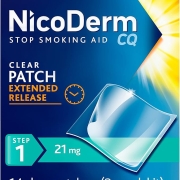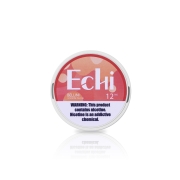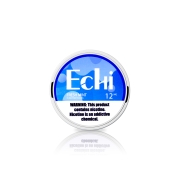Navigating Bulk Nicotine Procurement: A Supplier Selection and Guideline for Global Buyers
In today’s digital-driven economy, the landscape of tobacco product procurement has shifted dramatically. As traditional retail channels evolve, more businesses are turning to online and global sources to purchase nicotine products in bulk. Whether you’re sourcing for a private label brand, expanding your retail portfolio, or seeking contract manufacturing partners, understanding how to navigate this procurement ecosystem is essential. This guide offers a comprehensive overview of how to effectively source nicotine products—especially from overseas—by focusing on supplier evaluation, cost structure, and cooperation models.
Considerations When Purchasing Nicotine Products in Bulk
Bulk procurement of nicotine products involves more than just pricing. Businesses must assess several critical dimensions to ensure a reliable, compliant, and high-quality supply chain:
-
Supplier Reputation and Certifications: Partner only with verified nicotine manufacturers who meet GMP, ISO, or PMTA-related standards. This safeguards product consistency and regulatory compliance.
-
Nicotine Preparation Methods: The method used—be it freebase, salt, or hybrid nicotine—directly impacts product performance and consumer experience. Reputable liquid nicotine wholesalers disclose full specifications, including purity levels and formulation types.
-
Customer Service and Operational Support: From pre-sales inquiries to after-sales services such as logistics, documentation, or returns, a reliable supplier must provide end-to-end support—especially critical in international transactions.
Differences in Procurement Channels: China vs. the United States
Global sourcing strategies must be adapted to regional procurement dynamics. Here’s how two of the most active regions—China and the U.S.—differ:
China
-
Advantages: Direct access to manufacturing hubs, lower unit costs, and flexible MOQ policies. Many suppliers offer OEM or white label customization at competitive rates.
-
Challenges: Language barriers, regulatory complexity, and longer lead times. Buyers must also verify export licenses and product safety certifications.
-
Recommendation: Use platforms like Snuff Factory to connect with vetted manufacturers offering global delivery and English-language service.
United States
-
Advantages: Tighter quality control, faster domestic shipping, and simplified payment and legal frameworks. Suitable for businesses targeting compliance-heavy markets like the U.S. or Canada.
-
Challenges: Higher pricing and limited flexibility in customization or MOQs.
-
Recommendation: Ideal for startups and retail chains prioritizing regulatory adherence and shorter supply chains over cost-efficiency.
Cost Composition: Equipment, Raw Materials, and Processes
To understand pricing structures, it’s important to break down the key components that contribute to the final cost of nicotine products:
-
Production Equipment: Automated pouch-filling lines, liquid mixing systems, or patch sealing machines vary in sophistication and directly influence unit costs.
-
Raw Materials: The grade of nicotine (USP/pharma-grade vs. industrial), pouch materials (plant-based vs. synthetic), and added flavors or excipients all affect the final price.
-
Manufacturing Process: Steps such as purification, batching, and packaging—combined with quality control measures—determine both safety and shelf life.
When comparing quotes between suppliers, always request a full cost breakdown to evaluate value over raw price.
Understanding White Label vs. Original Equipment Manufacturer (OEM)
Choosing the right cooperation model depends on your branding strategy and production needs.
-
White Label Products:
These are ready-made nicotine products you can brand and market as your own. They offer a low-barrier entry for businesses needing speed and simplicity.Pros: Fast market entry, lower startup costs, minimal product development required.
Cons: Limited customization, potential overlap with competitors using the same base formula. -
OEM (Original Equipment Manufacturer):
OEM allows for full customization—from flavor profiles and nicotine strength to pouch size and packaging. Ideal for brands aiming to innovate or differentiate.Pros: Greater product control, brand uniqueness, tailored formulations.
Cons: Higher development cost and longer lead times.
How to Place an Order, Request a Sample, and Initiate Cooperation
Sourcing successfully begins with testing and builds through transparent collaboration. Here’s a step-by-step guideline:
-
Initial Inquiry: Reach out to vetted suppliers via platforms like Snuff Factory to discuss your business goals, product types, and volume expectations.
-
Sample Request: Always request samples before bulk commitment. This helps you evaluate nicotine quality, pouch texture, flavor retention, and user experience.
-
Terms Negotiation: Define MOQs, lead times, pricing tiers, packaging options, and compliance documentation (e.g., COA, MSDS).
-
Order Placement: Use the supplier’s secure portal—like Snuff Factory’s product page—to finalize the order. Confirm logistics terms, payment schedules, and post-sale support in writing.
-
Establish Long-Term Cooperation: Consider long-term agreements to ensure consistent pricing, priority production slots, and better support as your order volume scales.
Conclusion
As the global market for alternative nicotine products continues to expand, success in bulk procurement hinges on strategic supplier selection, cost-awareness, and operational transparency. By understanding the regional nuances of sourcing in China versus the U.S., evaluating your fit between OEM and white label models, and following a structured cooperation workflow, businesses can minimize risks while optimizing margins.
Partnering with trusted suppliers such as Snuff Factory not only simplifies the procurement process but also positions your brand for sustained growth in a competitive industry. Whether you’re scaling an established product line or launching a new venture, the key lies in making informed, strategic purchasing decisions from the start.










Leave a Reply
Want to join the discussion?Feel free to contribute!